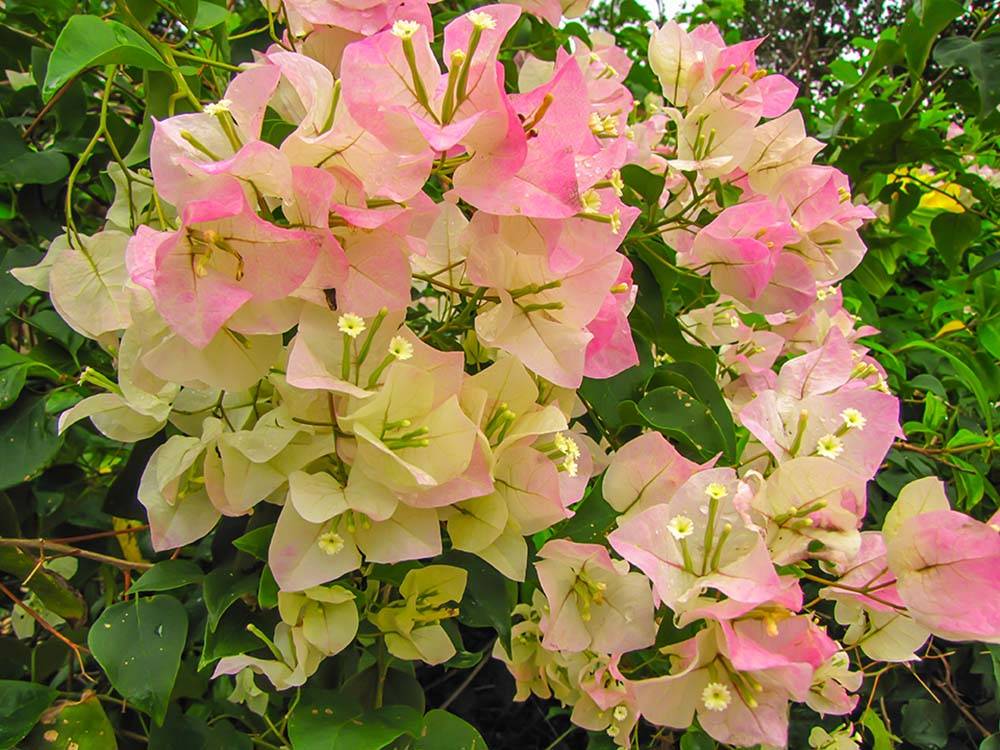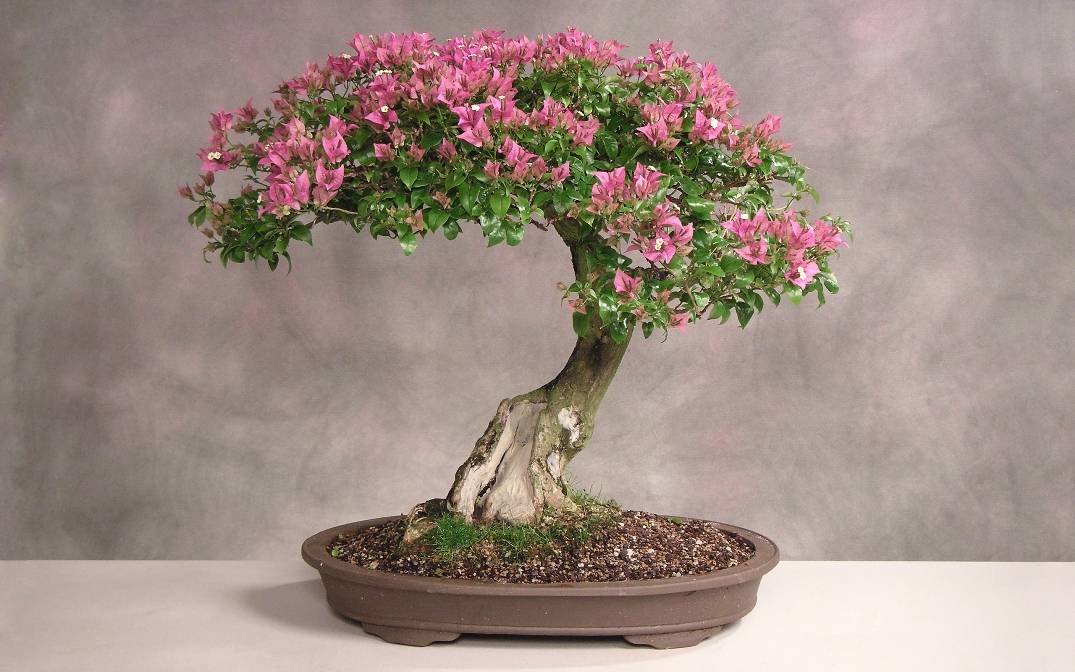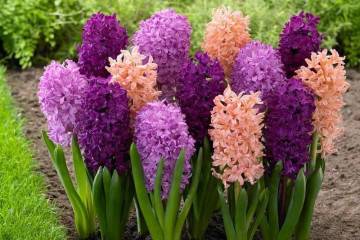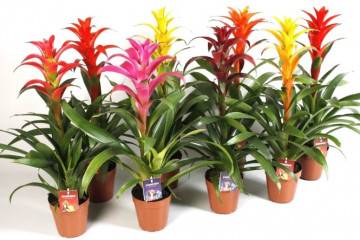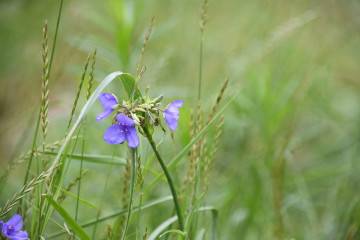Bougainvillea - home care and variety of species
Content:
Back in 1768, a French expedition in search of new lands brought several varieties of bougainvillea from southern Brazil. It inherited its name in honor of the navigator L. Bougainville, who brought the plant to Europe together with the botanist F. Commerson.
The origin and appearance of bougainvillea
Bougainvillea is a climbing vine that blooms all year round. Its ancestral home is South America, where it grows everywhere in the form of shrubs or trees and weaves, clinging to all infrequent, but pointed thorns on branches up to 5 m or more long, attracts attention with a variety of species.
Bracts from white and pink to red, purple and even purple give the liana decorativeness. Bougainvillea, whose care and maintenance in an apartment attracts exotic lovers, allows you to adjust the height of the bush by systematic pruning. She especially likes the ability to combine a variety of colors, which allows you to form amazing compositions. One of the notable varieties of bougainvillea Double Gold.
Description of bougainvillea
The leaf of the plant is oval or ovoid with a sharp or smooth-even tip. The shade on the back side differs from the inner one in color. Variegated foliage is also less common. Arranged on a branch alternately.
The flowers of the liana are in the form of tubes, collected in inflorescences-brushes. They are unattractive and quickly fade away. The bougainvillea flower owes its splendor to the bracts, which are brightly colored and striking in a variety of shapes and sizes (3-10 cm).
Bracts forms:
- rounded;
- sagittal;
- heart-shaped;
- triangular.
In countries with a climate similar to Brazilian, bougainvillea is popular for its decorative and year-round flowering. It is adorned with private households, hotel grounds, gardens and parks. Designers use it extensively to add splendor to the landscape.
Types and varieties of bougainvillea
The tropical beauty belongs to the Niktagin family, evergreen plants. There are up to 20 species and a large number of breeding varieties that differ in the color of foliage and bracts, the size of the plant itself.
Brazilian views
Three indigenous Brazilian women, thanks to selection, gave birth to new varieties described below.
Naked or smooth Bougainvillea glabra
It is famous for its bare stem with a moderate number of thorns. Fifteen centimeter leaves in the form of an oval with a sharp end of a dense green color with shine. Bracts of white, bright yellow, tangerine, ripe raspberry and lilac shades. Gives an abundance of inflorescences over a long period.
Loves dry stony soils. It can be given any shape, since it tolerates pruning calmly. The first description is dated 1850 and belongs to the Swiss botanist Jacques Denis Choisy.
Beautiful Bougainvillea spectabilis
A tree-like liana, stretching up to 15 m with the help of branches and thorns. Serves as a decoration for pergolas, awnings, walls. Velvety leaves, shaped like a heart. Forms paniculate inflorescences from mid-spring to mid-October.Bracts are pale pink, lilac or bright red, becoming pale during wilting. Her homeland is the Brazilian tropics and rocky slopes.
Peruvian Bougainvillea
This is a variety that is not prone to branching and requires systematic pruning and adjustments to give it a neat curvy shape. The foliage is smooth, has an elongated shape. Bracts are pale pink or dark red. Peruvian was first discovered by the traveler and naturalist from Germany Alexander von Humboldt in 1810.
Three varieties, from the natural collection, crossing, give life to new plants, amazing in shape and color of bracts and leaves.
Bougainvillea hybrid varieties
Bougainvillea Butt is a naked and Peruvian hybrid created by nature. It appeared in the own garden of the city of Cartagena with Senora Butt and served as the basis for the emergence of new varieties of this plant.
Spectabilis and Peruvian hybrids are strong bush varieties with bottle green smooth foliage. Bracts of copper color gradually acquire a shade from pink to purple. Flowering is repeated several times per year.
Bougainvillea Sanderian is unpretentious. Flowering is distinguished by the abundance and splendor of the purple bracts. Easily pruned and convenient as an option for home breeding.
You can find out what shades of bracts are from the table below:
| Bougainvillea hybrid variety | Bracts colors |
| Vera Deep Purple | rich raspberry |
| Glabra donker | lilac-violet |
| Donyo | light pink |
| Jamaica white | snow-white |
| White cascade | milky or with pink edging |
| California Gold | golden |
| Golden tango | yellow |
| Red tomato | Bordeaux |
| Lateritia | bright salmon |
The table below will help you choose the color of the plant to your taste.
Terry varieties
Terry bougainvillea varieties are very popular with connoisseurs of this plant. Their inflorescences delight with the splendor and variety of colors: pale white, rich salmon, calm violet, purple and other shades.
For example, Double Red does not lose its brightness during the entire flowering period. Double Pink is a more delicate variety with green bracts at the base.
Varieties that change color
Selective Bougainvillea varieties are able to change color during the flowering period:
- Bois De Roses - in the initial stage of flowering, nature gave her the orange tone of stipules. Gradually, they turn into a deep pink color.
- Thai Gold - gradually fading from golden-orange, turns into a ruddy rose bush.
Bicolor varieties
Snowcap Multi and Strawberry's bicolor white and pink riot can be likened to creamy strawberries. Strawberry means strawberry.
The Mary Palmer variety has touches of lavender and lilac against a more delicate background of white bracts.
Against the backdrop of variegated greenery with a golden touch of San Diego bougainvillea Red Variegata, bright red bracts, like a flame, catch the eye.
Bracts of Bougainvillea Delta Dawn - golden or warm pink with a coral tint, surrounded by bluish-green foliage with a white edging, cast gold in the sun.
Orange Ice - this variety surprises not only with the brightness of the orange bracts, but also with the variegated foliage.
Bonsai varieties
A person is always trying to improve the world that surrounds him. Bonsai is a Japanese art and the result of such changes. The breeders did not disregard the bungewill either.
- The indoor variety Alexandra is compact and allows you to create original compositions. When planting in open ground, it must be remembered that this variety does not tolerate temperatures below -8 ° C.
- Bhutan’s is a variety that can withstand any kind of correction.It can be given any shape, it all depends on the imagination of the creator of the magic garden. The main thing is to comply with the rules of agricultural technology.
Transplanting bougainvilleas after buying into a pot
A newly acquired plant needs a transplant. To do this, you need to pick up a pot with drainage holes for the free flow of oxygen to the roots. Pour drainage inside. Roots that will grow into the drainage (expanded clay, polystyrene, moss, small pebbles) can be removed. Water will not stagnate during watering if excess needs to be removed 20-30 minutes after watering.
Step-by-step planting process
Drainage is poured into the bottom of a pot corresponding to the size. After transshipment, add loose earth, saturated with useful components.
A good soil is a mixture:
- sod land - 2 parts;
- leaf land - 2 hours;
- humus - 1 tsp;
- sand - 1 tsp
In an apartment, it is better to transplant a flower after 2 years, increasing the size of the pot. Bougainvillea loves the sun. Spraying should be carried out on hot days, but in the first half of the day. Frequent watering with warm, settled water is required.
Reproduction of vines
There are several ways to propagate bougainvillea: planting by seeds, breeding by cuttings and rooting of cuttings. When sowing with seeds, the best result is achieved by nature itself, at home you have to wait for shoots for several months. This is evidenced by numerous reviews.

During the pruning period of the plant, cuttings can be rooted if you leave a couple of buds on the stem.
In this way, the plant can be easily propagated. For rooting, it is better to use shoots that are not yet stiff.
Bougainvillea: growing and care
Growing indoor bougainvillea is an exciting experience. Liana has a variety of colors, which allows you to decorate any interior, skillfully combining different colors.
Bougainvillea is quite unpretentious: caring for it at home is not difficult. The main thing is to follow a few simple rules in order to productively look after the southern beauty.
Trimming is done to create an attractive look. Old branches need to be removed. They can serve as an obstacle to the formation of processes, mainly new inflorescences are formed on them.
Why bougainvillea does not bloom
The buds on the plant may not set for several reasons:
- The bush does not like drafts and changes of place.
- Watering with cold water does not tolerate, as a result - it throws off the foliage and stops blooming. Water for irrigation is used at room temperature and settled.
- Make sure that there is no excess moisture, the root system does not rot.
- Incorrect pot volume. The size should correspond to the volume of the rhizome. When transplanting, you need to increase the volume of the container by a couple of centimeters, the process of flowering bougainvillea will depend on this. In a smaller pot, the plant spends all its energy on the formation of buds.
Top dressing should be done once every 1-2 weeks in any season except winter. To increase flowering, nitrogen, phosphorus and potassium can be used in equal doses. The dosage is indicated on the packaging of the drug.
The worst diseases during the cultivation period of bougainvillea are considered to be excess moisture or drought. It rarely attracts pests. Spraying with chemicals will help get rid of a spider mite or mealybug.
How bougainvillea grows and how much depends on the care of it and on the climate. In the Russian climate, the life span of a plant is no more than 5-10 years. Although the flower does not die after this, it stops growing, its trunk becomes stiff.Greenhouse representatives are known who have reached the age of three decades.
Acquiring and growing this flower is useful for replenishing your home collection or decorating your garden. It will give a lot of positive emotions, because this vine was created by nature itself for admiration.




